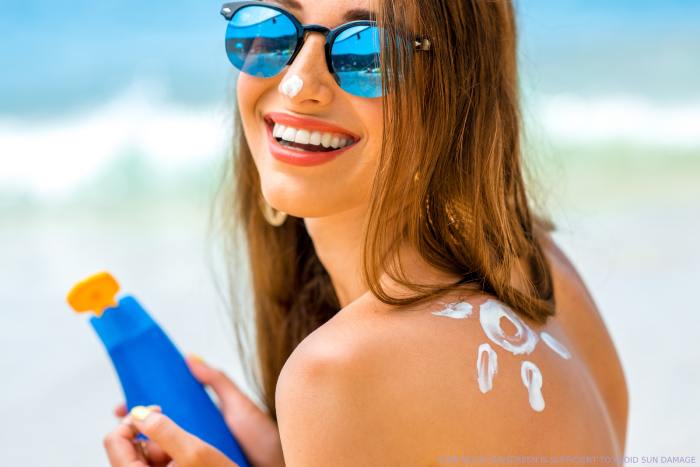If you spend any time outside, you’ve likely heard at least a few warnings about the necessity of wearing sunscreen.
While using sunscreen is preferable to not using it if given the option, choose one that offers broad-spectrum UV protection at least SPF 30. Everybody, regardless of skin tone, should follow these rules. Before going outside in the sun, you should ideally apply sunscreen on your skin for 30 minutes.
Table of Contents
Do I need to apply sunscreen to my body every day?
Absolutely! Regardless of the climate, whether it is hot or freezing
Regardless of temperature or cloud cover, UV radiation that causes aging and skin cancer is everywhere, and we should use sunscreen frequently. The development of skin cancer is brought on by UVA and UVB radiations. The primary cause of early skin aging is the deeper penetration of UVA rays. Smaller in wavelength than UVA rays, UVB rays burn skin. Even windows are not a barrier to UVA rays. Therefore, even if you spend the entire day at your desk or driving, you might still expose yourself to harmful UV rays. While UVB radiation peaks in the middle of the day, UVA radiation remains constant throughout the day. It adds up even if you spend the entire day doing errands and getting sunburned.
Does sunscreen have a lifetime?
Since most sunscreens have expiration dates (often three years from the manufacturing date), they should not be used after that point. However, several factors, such as heat exposure (leaving it near the pool, in hot automobiles, etc.), might render the sunscreen less effective than intended. Chemical sunscreens frequently contain components like oxybenzone or avobenzone that can oxidize over time and lose effectiveness. Zinc or titanium-containing mineral sunscreens are often more stable. The lotion may, however, deteriorate with time, causing the chemicals to disperse and the cream to become watery or gritty and useless.
Furthermore, continuous opening and shutting of the bottle might promote the growth of germs in the lotion, which could harm the skin. If you use sunscreen properly (daily, every two hours), you take the time to go through the bottles before the expiration date. You need to wear more sunscreen if it has been over a year since you last used something similar.
How frequently should sunscreen be changed?
If summer is over and you still need to finish a bottle of sunscreen, you haven’t used it frequently enough. I advise using a tablespoon of it on your face and a shot glass-sized amount of body lotion every two hours or more regularly if you exercise or swim (even if the product says it is water-resistant). The consistency shouldn’t alter in any way. Your sunscreen may perform better if you experience clumping or graininess. Additionally, if the bottle starts to smell strange, this may be a sign of a bacterial infection. Replace it if you’re uncertain.
What makes SPF 50 and SPF 75 different from one another?
When sunscreen is applied precisely as instructed, it takes less time for UVB radiation from the sun to cause the skin to get red than it does when it is not. The SPF number represents this difference. The ideal situation would be for skin to burn 30 times slower while applying sunscreen than when it does not. However, it is uncommon to see sunscreen used as recommended. An individual may need more than SPF 30 to be protected compared to another due to genetic variance.
Higher SPFs give consumers a false sense of security, causing them to stay out in the sun longer and apply less frequently, according to studies. Everyone should use SPF 30 or higher, according to several experts. Apply sunscreen 30 minutes before heading outside, and then reapply it every two hours or sooner if you’re swimming or sweating. SPF 100 won’t be twice as effective as SPF 50 because the SPF values aren’t linear. SPF 30 sunscreens offer 97 percent UVB radiation protection, whereas SPF 45 sunscreens offer 98 percent protection.
Keep in mind that SPF only refers to UVB protection and not UVA. Always search for a sunscreen with a broad spectrum designation, which shields against UVA and UVB rays.
How soon after should you reapply?
“Every two hours, but more frequently if you swim or perspire (despite the lotion’s promise to be water-resistant) It is significant to highlight that no product is waterproof, and advertisements for items that claim to be water-resistant are no longer permitted.
What is the least popular area to apply sunscreen?
Your hands’ tops, your feet’s tops, and the tops of your ears. Additionally, I advise using SPF-fortified lip balms and caps to protect hair because many skin malignancies that afflict both older and younger people hide behind their hair.
What should you do if you become sunburned?
Over five sunburns quadruple your chance of developing melanoma! So staying clear of them at all times would be beneficial. However, nobody is perfect, and accidents do occur. Applying cold, moist clothes to the area after or taking a cooling shower to chill it down is crucial. To soothe the skin, apply a soothing moisturizer containing aloe (avoid anything oily or thick that contains petrolatum since these can trap heat and make burning worse).
To relieve inflammation, immediately use a non-steroidal anti-inflammatory (NSAID), such as ibuprofen. The face can also be soothed using 1% hydrocortisone cream, available over-the-counter and used twice daily. Drink a lot of water to restore the fluids and electrolytes in your body. Seek medical treatment if you or your kid has any blisters, fever, chills, or acts disoriented.
Also read:- The Advantages Of Wearing Sunglasses







